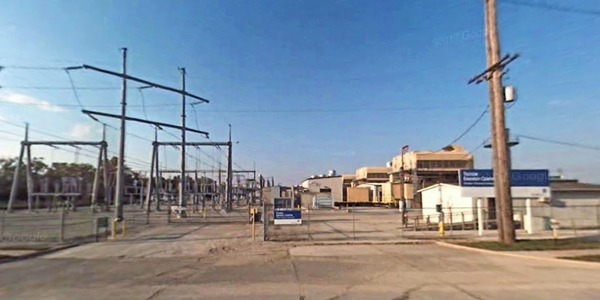By Rory D. Sweeney
FERC last week established a paper hearing to settle a dispute between PJM and an external resource on whether it should be allowed to pseudo-tie into the RTO even if doing so might raise congestion costs for members (EL18-145).
The order gives PJM 45 days to explain how it determined that Tilton Energy’s gas-fired facility failed the RTO’s market-to-market flowgate test, one part of its analysis of units outside of its territory that are attempting to become PJM capacity resources. The 176-MW facility located in Tilton, Ill., has been pseudo-tied into PJM for about two years and has cleared in each of the last two Base Residual Auctions. However, it cleared as part of a transition into stricter pseudo-tie rules that Tilton must pass by May 2019 in order to be eligible to offer into the BRA for the 2022/23 delivery year.
In preparation for that, PJM analyzed the unit’s pseudo-tie and told Tilton in December that it’s not eligible for a pseudo-tie after the 2021/22 delivery year because 44 flowgates failed the RTO’s test. Although none of the flowgates is coordinated, they would all become eligible for coordination between PJM and MISO as a result of the Tilton pseudo-tie.
The test is intended to ensure that PJM assumes responsibility for coordinating a new flowgate to facilitate a pseudo-tie only if at least one internal generation resource also has a 1.5% flow impact on that flowgate, which the RTO considers “appropriate.” The test focuses on internal resources because PJM may use one to alleviate the impact on congestion caused by the external pseudo-tied resource.
Results
PJM found that the pseudo-tie affects 231 flowgates, of which 65 already were coordinated and 166 would newly become eligible for coordination. Of those 166 newly eligible flowgates, 44 did not meet the 1.5% threshold.
PJM is concerned that although MISO has not yet invoked its coordination rights to require PJM to take responsibility for Tilton’s effects on those flowgates, that doesn’t mean it won’t. The RTO says it wants to ensure the pseudo-tie wouldn’t alter its customers’ exposure to coordination costs in the event that MISO does so in the future.
Tilton argues that once a resource’s pseudo-tie passes the test, any subsequent changes to the system should not adversely affect the pseudo-tie, so the potential for flowgates to need to be coordinated in the future shouldn’t affect Tilton’s eligibility. American Municipal Power and Brookfield Energy Marketing filed answers in support of Tilton, agreeing that the test should only apply to flowgates that PJM and MISO have already designated as coordinated.
Brookfield argued that PJM’s interpretation of “each eligible coordinated flowgate” in its Tariff to mean any flowgate is “grammatically nonsensical, as ‘eligible’ clearly does not modify ‘coordinated’ but instead refers to the subgroup of coordinated flowgates.”
Hearing
Instead of hashing out the grammar, FERC set the matter for a paper hearing. The commission ordered PJM to explain four things:
- How it determines a flowgate is impacted by a pseudo-tie under the terms of its joint operating agreement with MISO and how it identifies an “eligible coordinated flowgate” resulting from a pseudo-tie from MISO. That includes “a step-by-step description of the process and an explanation of its basis for doing so” and identifying any related processes that might depart from the JOA.
- Whether it applies the 5% shift factor threshold in the JOA to determine “eligible coordinated flowgates” or, if not, why it does not, and whether the shift factor threshold, other specific thresholds set forth in the JOA, or some other screen would be a reasonable means of identifying flowgates for which coordination could be required.
- How the flowgate test was applied to Tilton’s pseudo-tie, including an explanation of how PJM identified the “eligible coordinated flowgates” associated with the pseudo-tie and how PJM implemented each step of the test.
- Whether PJM intends to request, or whether PJM expects MISO to request, coordination for any of the “eligible coordinated flowgates” identified for Tilton, and why or why not.
Tilton will then have 30 days to respond with testimony or evidence. The commission set the refund date for May 11, 2018, when Tilton filed the complaint.




